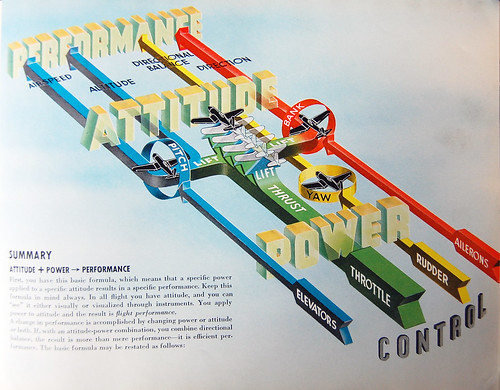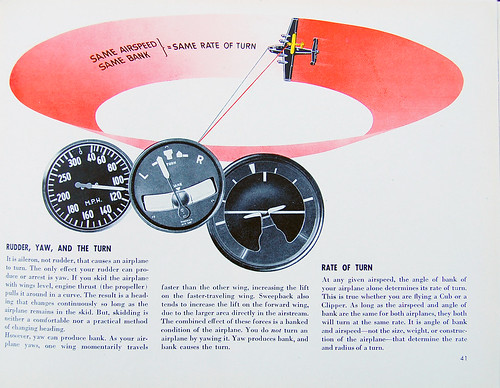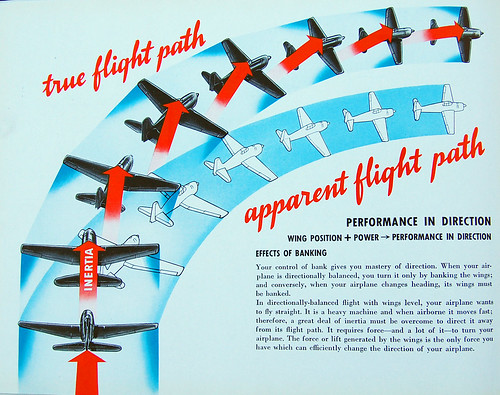“Whenever there is a hard job to be done I assign it to a lazy man; he is sure to find an easy way of doing it.” -Walter Chrysler
Letters from readers on great buildings, bad support, Getting Real with video games, etc.
The Guardian’s series on great buildings
Scott Matthewman writes:
In the UK, the Guardian newspaper has been bundling a free poster each day highlighting one of the world’s great modern buildings. They started with some of the most obvious, the Empire State, Sydney Opera House, etc. and today have included the 1930s-built Arnos Grove station on the London Underground.
As well as including original design blueprints, the posters contain a wealth of information putting the design of each building into historical context, most of which is also online (there’s a Flash-based interactive presentation of some of the buildings in the series available from that address, too).
I particularly thought you might enjoy the five design principles that WS Graff-Baker stuck to when designing new train carriages for the Underground:
1. Will it work? 2. Is it as simple as possible? 3. Could it easily be maintained in service? 4. Can it be manufactured? 5. Does it look well?
Something tells me you guys would have got on well with him.
Saying more by saying less
Neal Shaffer writes:
Thought you might take an interest in this post I just put up, as it deals generally with some of the same issues you tackle now and then on SVN:
Saying more by saying less: “Since you usually can’t simply dispatch with the fool, either online or in person, what do you do? You let him have his say, and leave it at that.”
Bad support info
Jose Espinal writes:
Continued…I would definitely like you to check this (Amusing But Sad Video Shows Verizon Reps Misquoting Rates 93 Percent of the Time) out.
I used to work for a communications company in a call center and the same happened with my colleagues, what happens is just some people don’t take their time to get to know the system they’re working nor they don’t know how to use it to look-up this type of information.
Flight Thru Instruments
Flight Thru Instruments is a US Navy pilot-training manual from the 40s designed by the Graphic Engineering Staff at General Motors. The information graphics are stunning, colorful, and clear.



Here’s the full Flickr set. Hat tip: Airbag.
Designing Interactions: Book recommendation
I got Designing Interactions over the holidays and have really enjoyed it so far. I’m not done with it, but I’m done enough to be able to recommend it.
The book looks at the evolution and breakthroughs of interface and industrial design over the last 40 odd years.
The history traces a squiggly line through the invention of the mouse, the graphical user interface, the PC, the laptop, the handheld, gaming, online services, the internet, and beyond. It’s a really interesting look at how this builds on that and that changes this.
The 700-page book is richly illustrated and includes interviews with some of the world’s most important figures in design, product development, design education, and computer science.
(Thanks for the book, JD)
[Screens Around Town] New York Magazine, WellStyled.com, and Bento
New York Magazine
New York Magazine’s Agenda calendar shifts focus depending on which day you mouseover.


WellStyled.com
Check out how the two languages are swappable at WellStyled.com. The sidebar is in Czech but if you click it, it swaps with the English. Even the nav changes too. And it sticks as you move through the different pages.


[Sunspots] The mystical edition
- Pantone's color of the year is Blue Iris
- “Pantone selected PANTONE 18-3943 Blue Iris, a beautifully balanced blue-purple, as the color of the year for 2008. Combining the stable and calming aspects of blue with the mystical and spiritual qualities of purple, Blue Iris satisfies the need for reassurance in a complex world, while adding a hint of mystery and excitement.”
- Clever thinking: reCAPTCHA uses captchas to digitize books
- “reCAPTCHA improves the process of digitizing books by sending words that cannot be read by computers to the Web in the form of CAPTCHAs for humans to decipher. More specifically, each word that cannot be read correctly by OCR is placed on an image and used as a CAPTCHA. This is possible because most OCR programs alert you when a word cannot be read correctly.”
- “People who design products are experts cursed by their knowledge”
- The curse of knowledge = When we know something, it becomes hard for us to imagine not knowing it. “It’s why engineers design products ultimately useful only to other engineers. It’s why managers have trouble convincing the rank and file to adopt new processes. And it’s why the advertising world struggles to convey commercial messages to consumers. ‘I HAVE a DVD remote control with 52 buttons on it, and every one of them is there because some engineer along the line knew how to use that button and believed I would want to use it, too,’ Chip Heath says. ‘People who design products are experts cursed by their knowledge, and they can’t imagine what it’s like to be as ignorant as the rest of us.’”
- Why Starbucks actually helps mom and pop coffeehouses
- “The key for independent coffeehouse owners who want to thrive with a Starbucks next-door is that they don’t try to imitate Starbucks. (As many failed coffee chains can attest, there’s no way to beat Starbucks at being Starbucks.) The locally owned cafes that offer their own unique spin on the coffeehouse experience — and, crucially, a quality brew — are the ones that give the Seattle behemoth fits.”

Obama's victory speech
If you love speeches like I love speeches you’ll love Barack Obama’s Iowa victory speech. Wonderful words expertly delivered by perhaps the most gifted political orator of our generation. This speech soars.
Discovering a new interest: Whittling
Back in August I started getting an itch to try something new. Something really new, something completely unrelated to computers (which have been my passion for almost 20 years now). Somehow (I don’t recall the details) I stumbled across whittling and woodcarving, and I’ve discovered that I really enjoy it.
I started by picking up a book or two on whittling from the library, and learned the basics of carving “whimseys” (interesting projects without a practical application, like chains or a ball-in-cage). I’ve since carved a few of them, and several decorative spoons, but I’m still exploring the domain. It’s almost like learning to read, or to program computers, where an entire world appears that you never knew existed. There’s so much to discover!
 After quite a bit of research, I purchased my first big power tool, a bandsaw (a Grizzly G0555), and I’ve been very pleased with it. My first Welsh love spoon (here) was done without a bandsaw, and although I learned a lot from the process, I also learned that I’d rather focus on carving the piece, than outlining it.
After quite a bit of research, I purchased my first big power tool, a bandsaw (a Grizzly G0555), and I’ve been very pleased with it. My first Welsh love spoon (here) was done without a bandsaw, and although I learned a lot from the process, I also learned that I’d rather focus on carving the piece, than outlining it.
Aside from the bandsaw and a simple electric drill, my tools are all hand tools. I use a Flexcut detail knife (which I absolutely love) for most of the work, and resort to some inexpensive chisels and gouges (that I picked up at Michael’s) for things like carving the bowl of a spoon, or feathers. (Eventually, I’d like to pick up a beginner’s set of real chisels and gouges, so that I can experiment with relief carving.) Also, I picked up a woodcarver’s saftey glove shortly after carving a big slice of my hand on accident.
So far, I’ve only carved basswood (a very cooperative hardwood, perfect for novice woodcarvers), but I’m starting to eye some of the harder woods, like cherry, walnut, and oak. I’ve also started learning about wood toxicity (scary!) so I’m being very picky in the woods I’ll carve!
Ultimately, there is something extremely satisfying in taking a plain block of wood and shaping it with your hands into something remarkable. The entire process is incredibly therapeutic and meditative. As I carve, or sand, I find myself pondering parallels between woodcarving and just about everything else. It’s a great time to slow down and reflect, something that I haven’t been very good at in general.
For the curious, I’ve got my current gallery available as a public Backpack page: Woodcarving by Jamis Buck. I’ve also got a YouTube video of me carving a small spoon, in fast-forward: Carving a decorative spoon. Just keep in mind that I’m still new to this art, and be gentle!
Behind the scenes at 37signals: Support
This is the fifth in a series of posts showing how we use Campfire as our virtual office. All screenshots shown are from real usage and were taken during one week in September.
![]() We use a separate room within Campfire to discuss customer support issues. This helps us keep all these related conversations in one place and keeps the main room (fairly) distraction-free. Again, the ability to quickly share screens is a killer feature here. Let’s take a look…
We use a separate room within Campfire to discuss customer support issues. This helps us keep all these related conversations in one place and keeps the main room (fairly) distraction-free. Again, the ability to quickly share screens is a killer feature here. Let’s take a look…
Turn a customer support query into a site change
Jamis deals with an admin setting problem and Ryan suggests a confirmation dialog change. Jamis plugs it in and Subversion reports the update.

Upload a problem screen submitted by a customer
Sarah Hatter helps out on a lot of support queries these days. Here she uploads a screen sent in by a customer and asks for advice on how to solve the issue. (Skitch is a helpful tool for marking up and sharing screenshots quickly.)

Latest news from the Product Blog
Some recent posts at the 37signals Product Blog:
Knickers, the lingerie weblog, uses 37signals products to manage its team
“The logistics of organising and keeping in touch between the three of us were a nightmare at first – two of us are in Scotland and our writer is in the States, and both Katie and Alison aren’t tech saavy and react with suspicion to any new technology I turn them onto. I needed a way to capture their work and keep it organised, so I slowly started introducing 37S tools to them – we started with Backpack for writing business plans and doing research, then moved into Highrise to keep a ‘collective inbox’ and mailing list, then finally to Campfire to generally stay in touch.”

Knickers’ Highrise Dashboard.
Highrise and 37signals “set the standard for web 2.0 apps”
Highrise is one of Lifehack.org’s 11 Top New Web Apps of 2007: “37signals sets the standard for web 2.0 apps, so you know it’s good: clean design, a highly functional interface, and interconnectivity with other 37signals apps.”
 Use calendar colors in Backpack to “pencil” in events
Use calendar colors in Backpack to “pencil” in events
In Backpack’s Calendar, the different calendar colors are a great way to differentiate events in this way. Use gray for maybe events and blue for definite events. Then you’ll be able to see, at a glance, which events are merely “penciled” in. Plus, you can change an event from maybe to definite by just changing the event’s calendar (located in the pulldown menu next to the event).
How marketing consultant Jon Moss and his clients rely on Highrise
“My first major contract is for a high end watch and diamond jewellery business called Ian Blowers Jewellers. Whilst they are a very successful, small, family business, one of the key areas they needed improvement was customer data and communication. This is where Highrise fitted in perfectly! As well as working with customer information, I am also looking after their rebranding, new websites and also general marketing, so Basecamp is the perfect tool for keeping people within the business up to date with what is going on, and what needs to be done.”
Consumerist praises 37signals customer support
“37signals, the company behind the affordable online project management service Basecamp, has some of the fastest customer service we’ve ever seen: twice over the past year, they’ve responded in near-real-time to support questions with helpful, non-canned responses. We’re so used to big companies that sacrifice customer service in the name of profit, or small companies that aren’t prepared to handle queries, that it’s nice to come across a company that does it well.”




